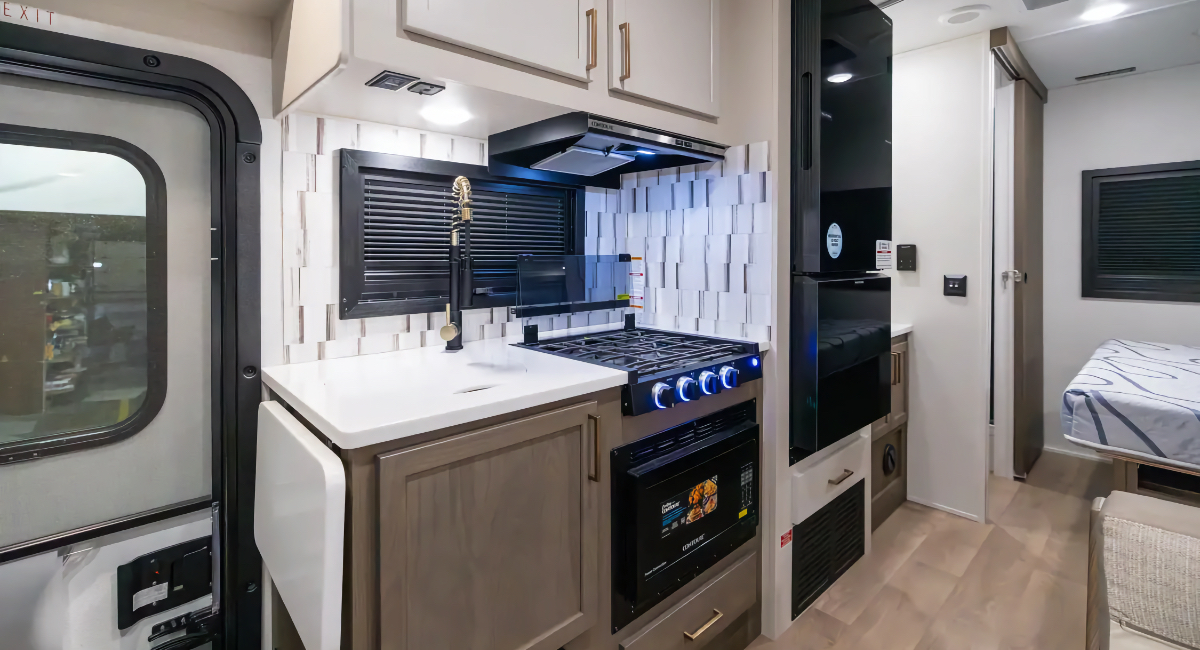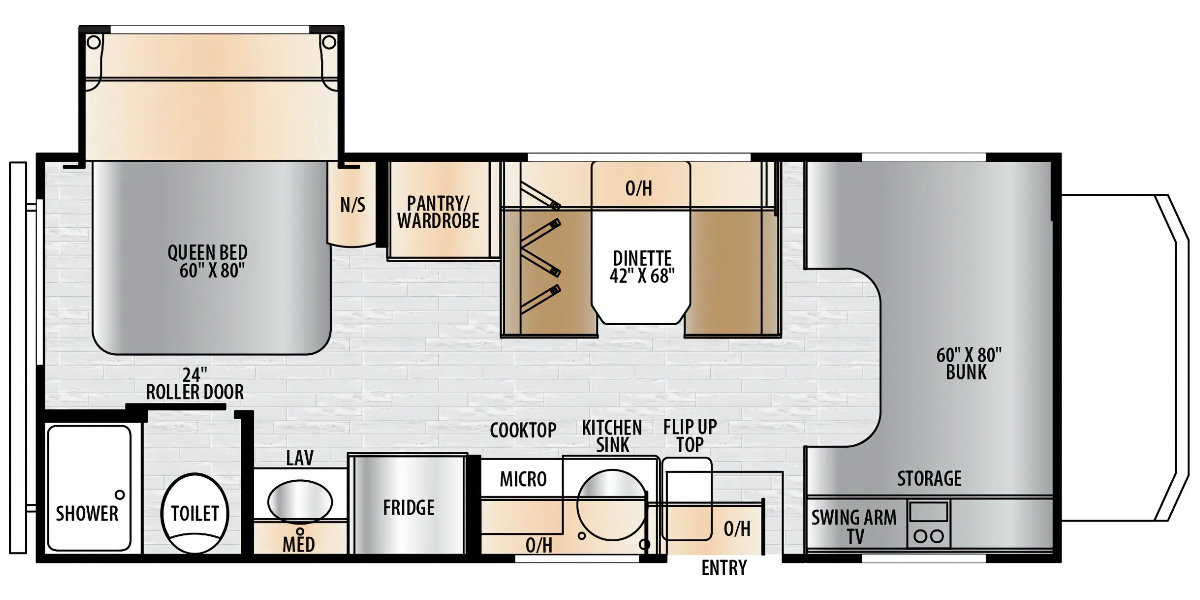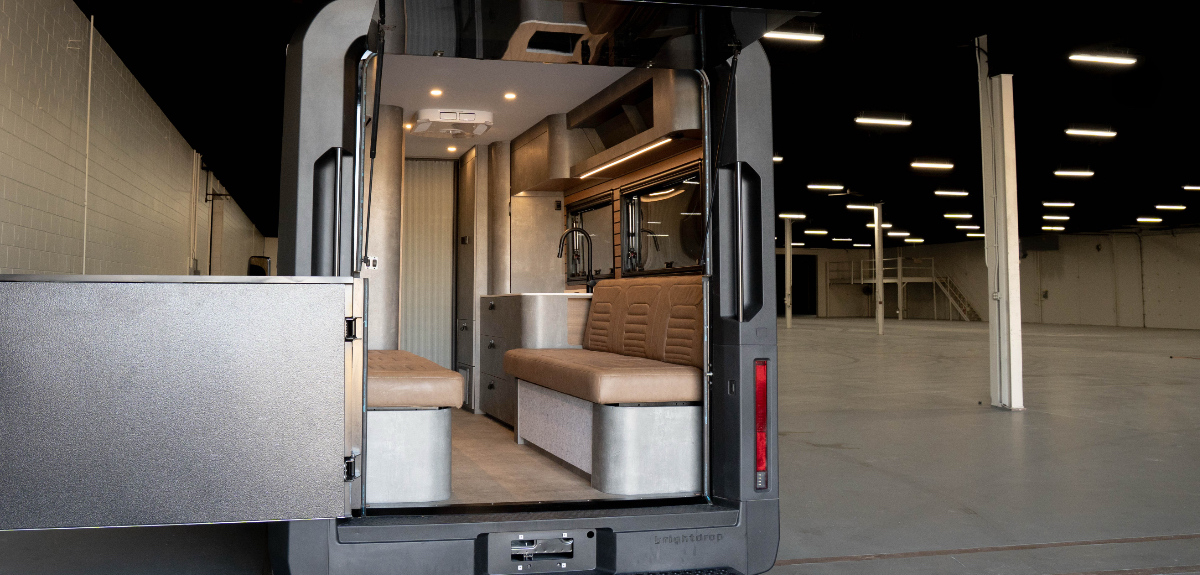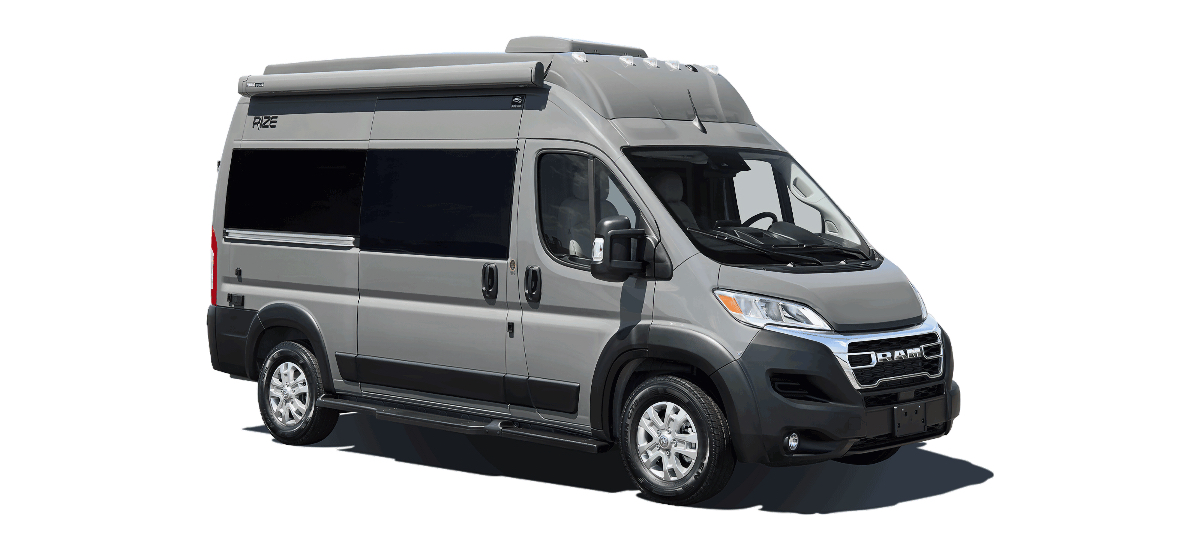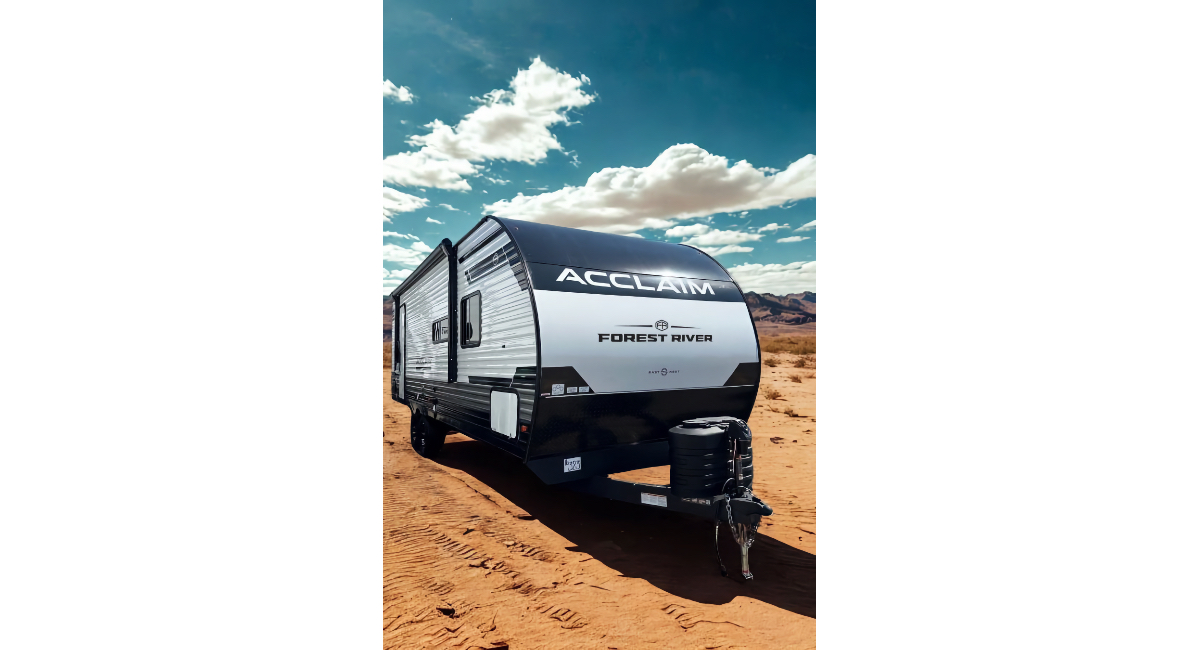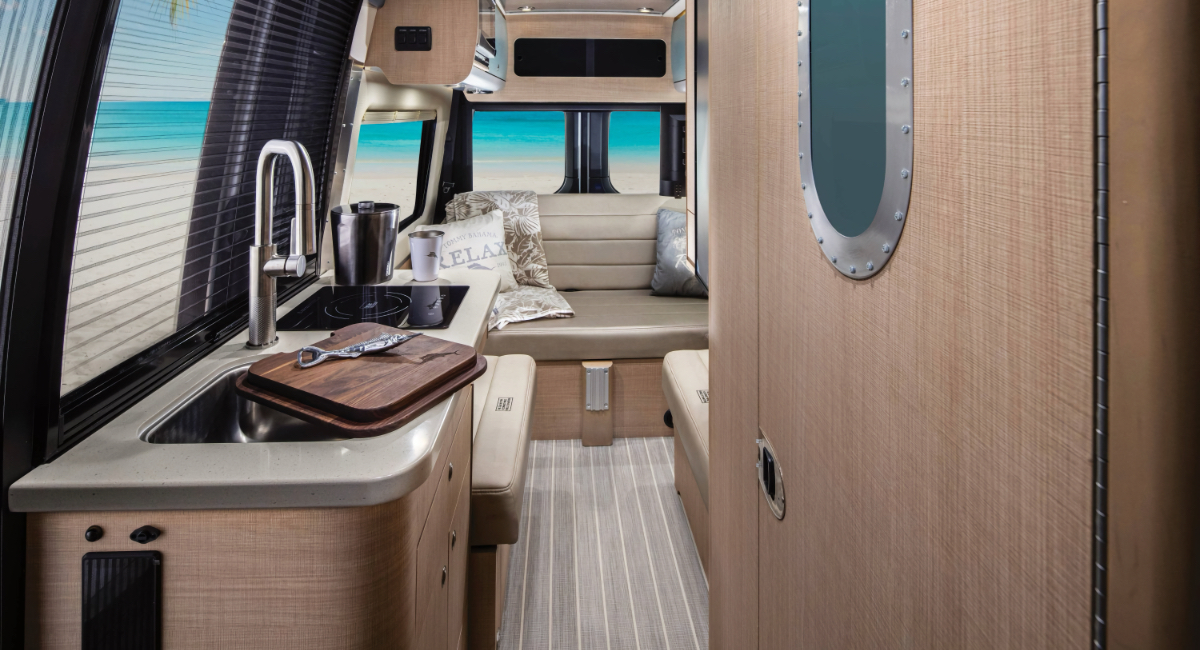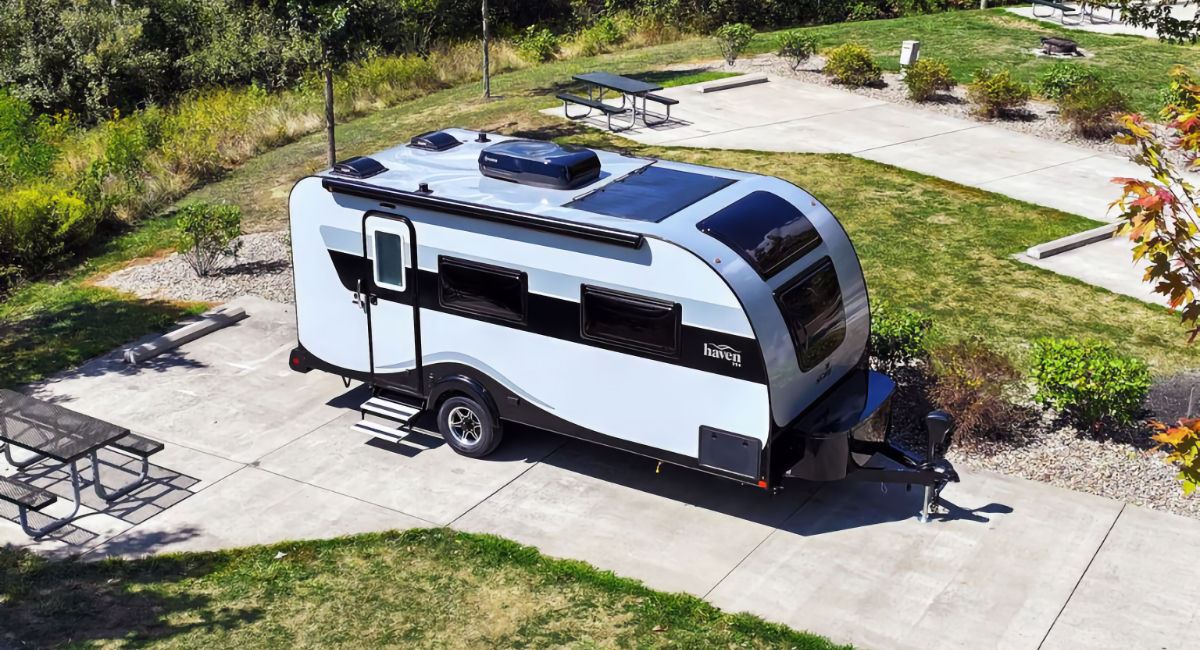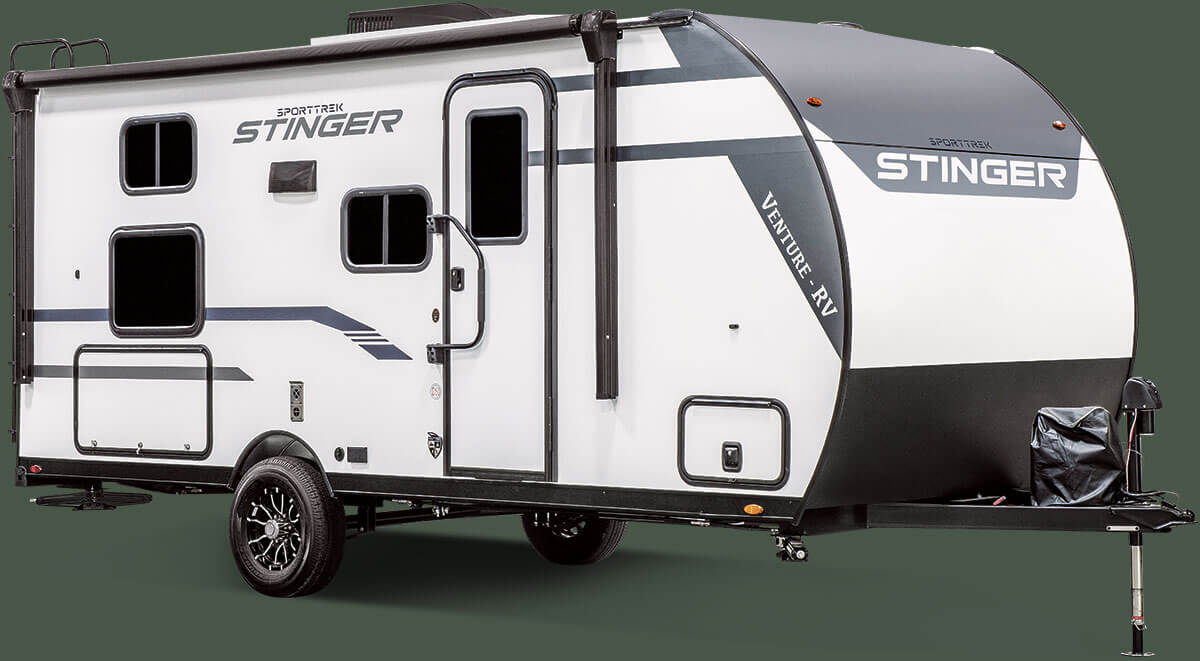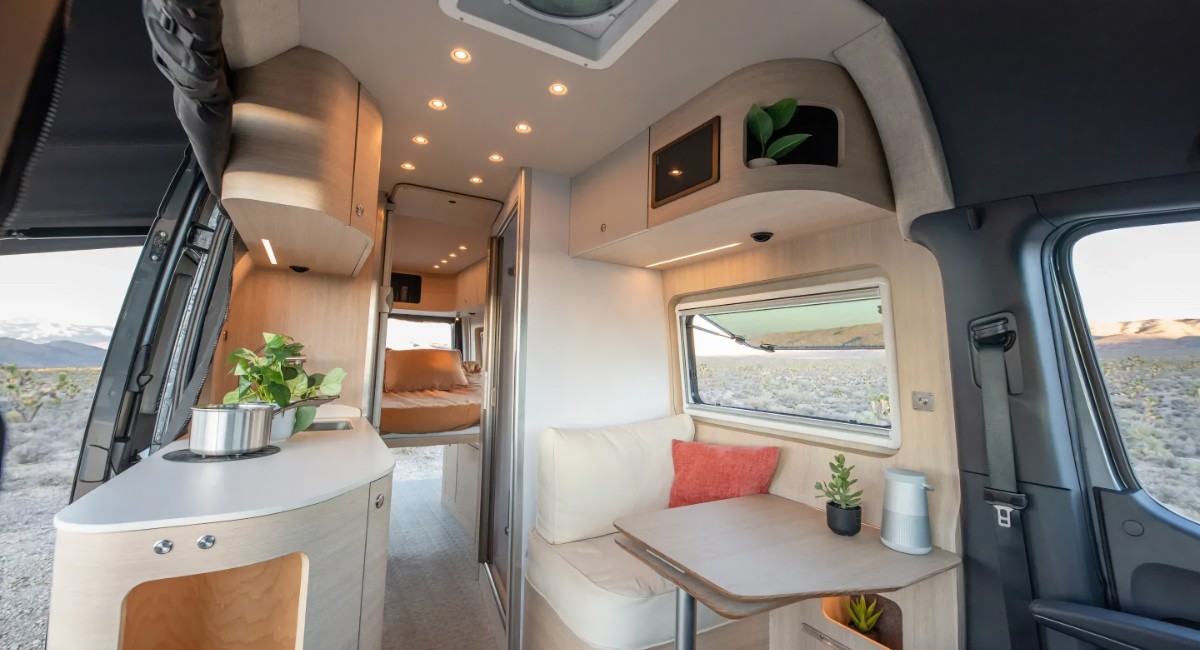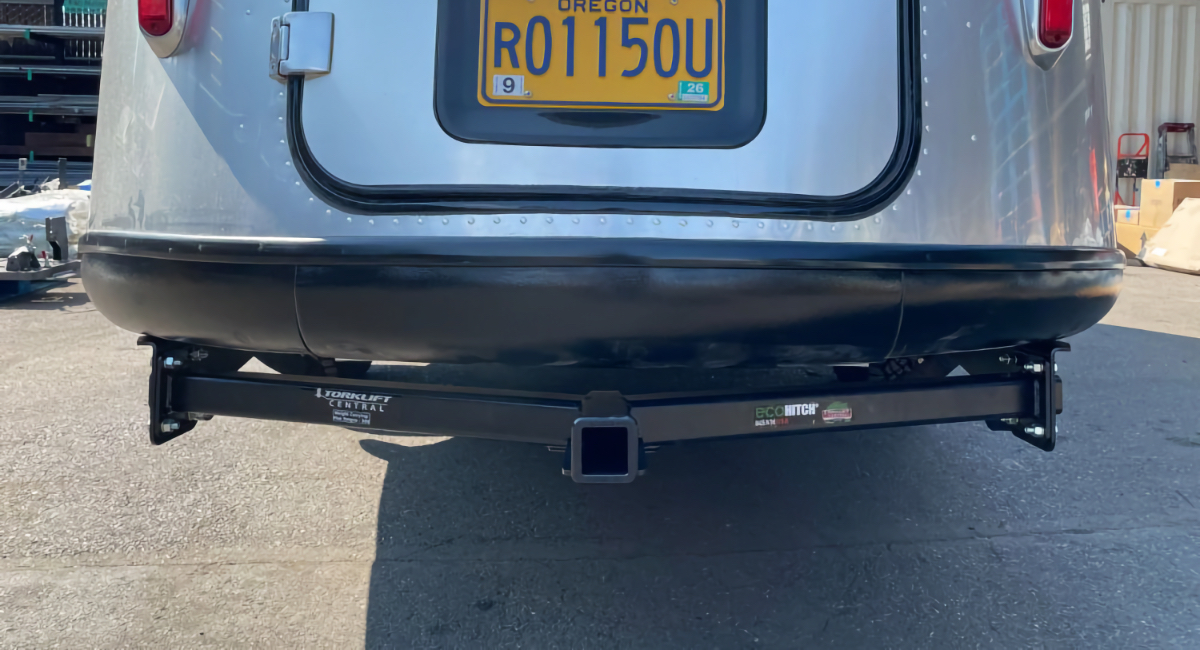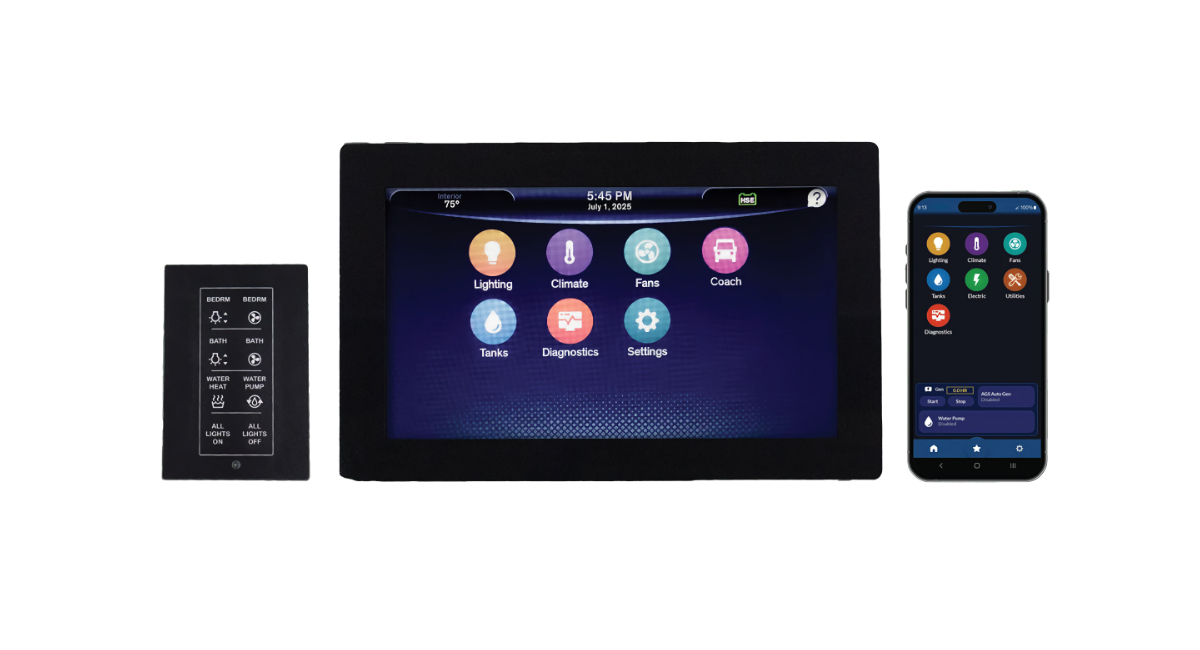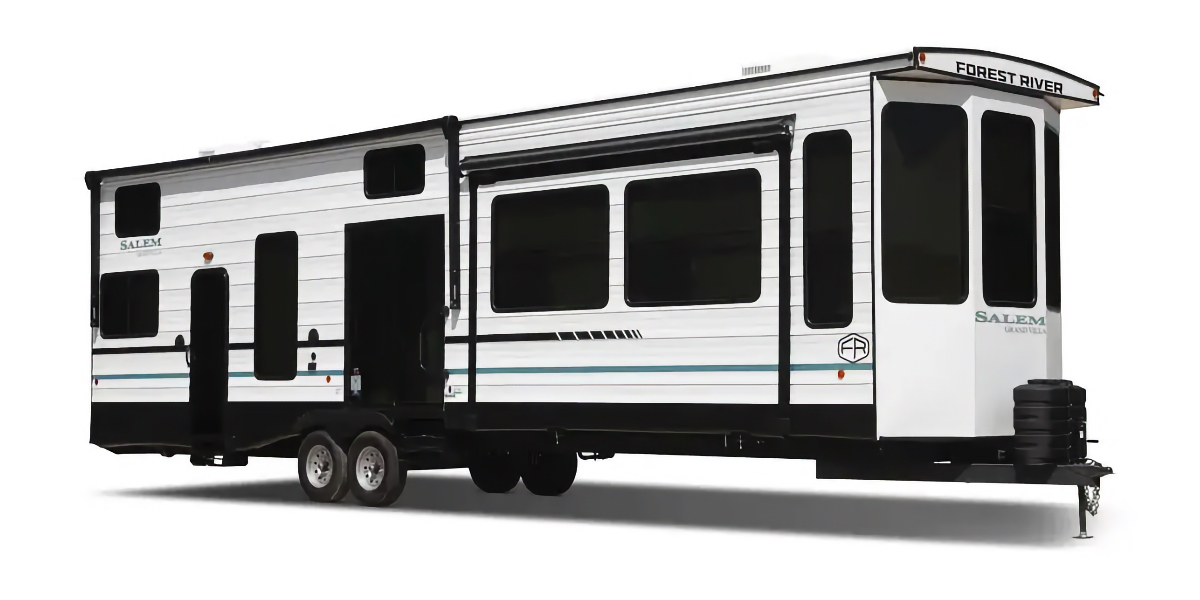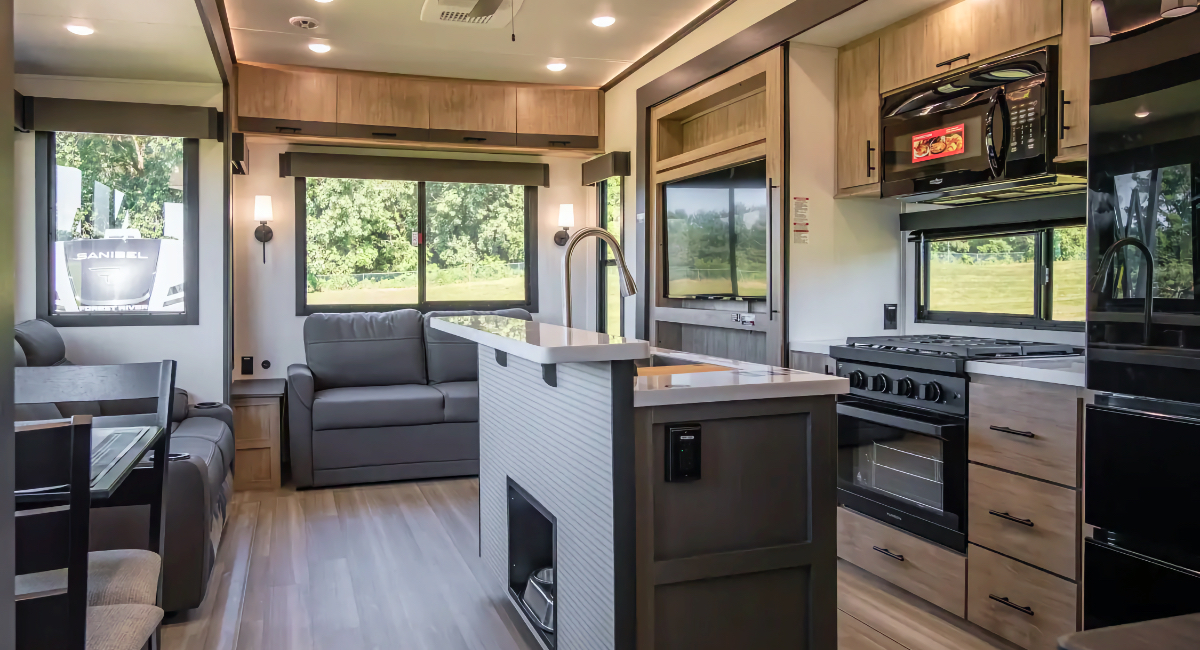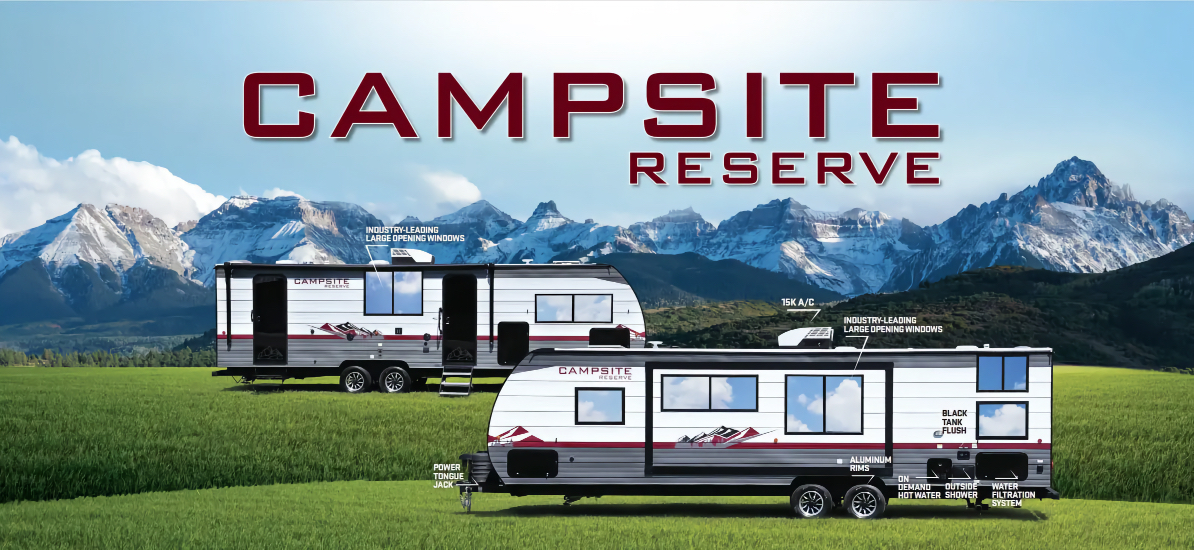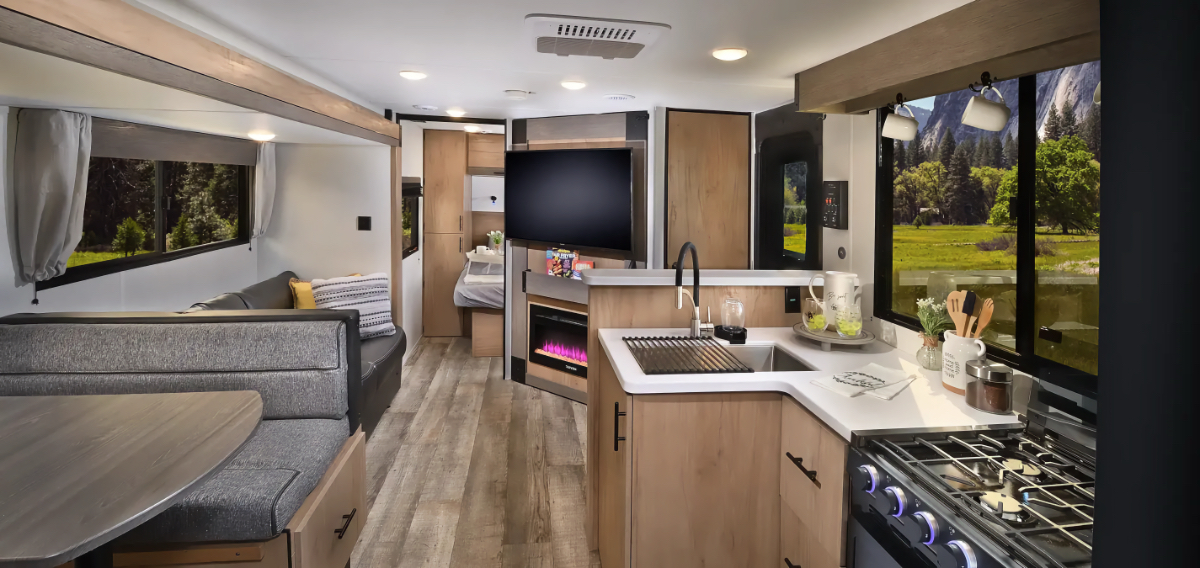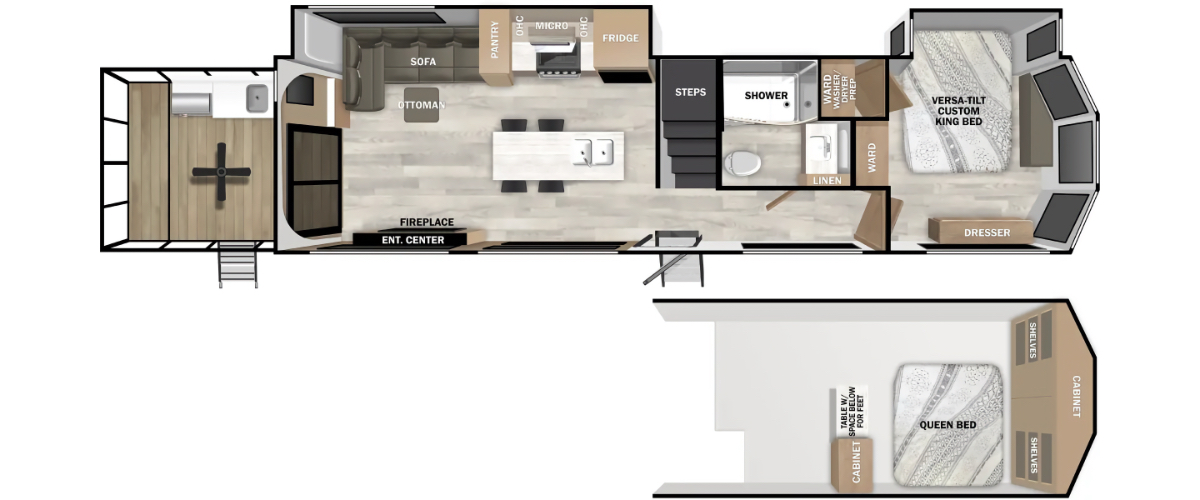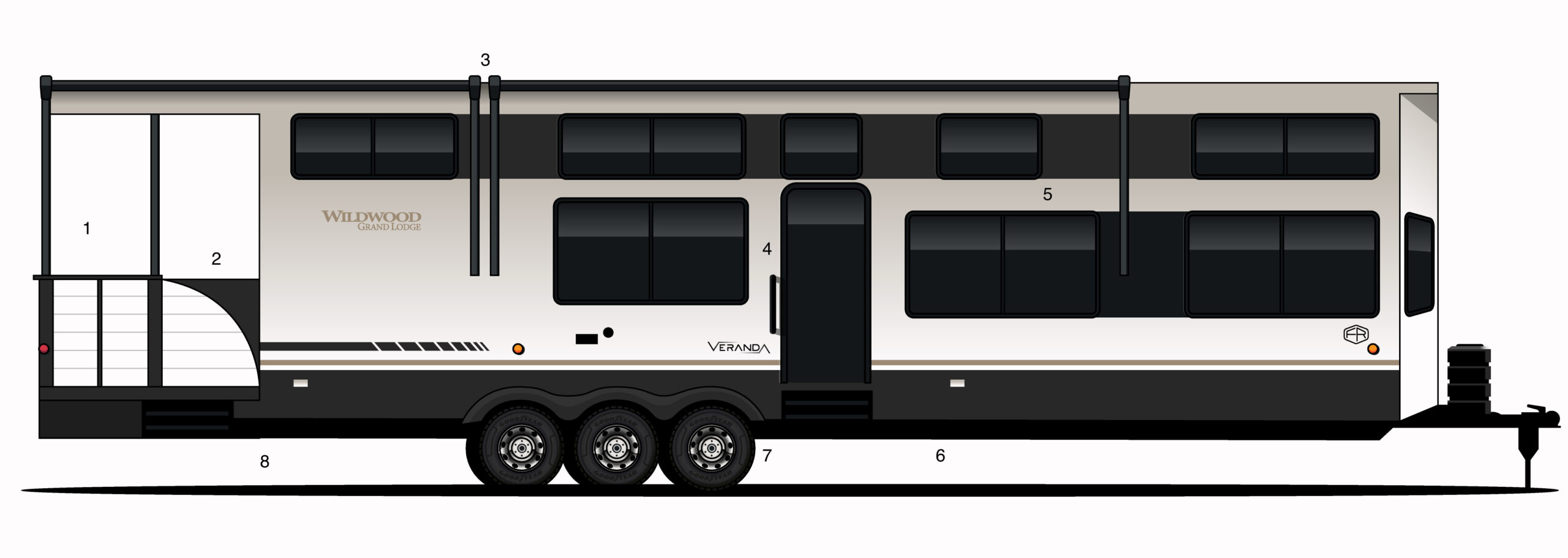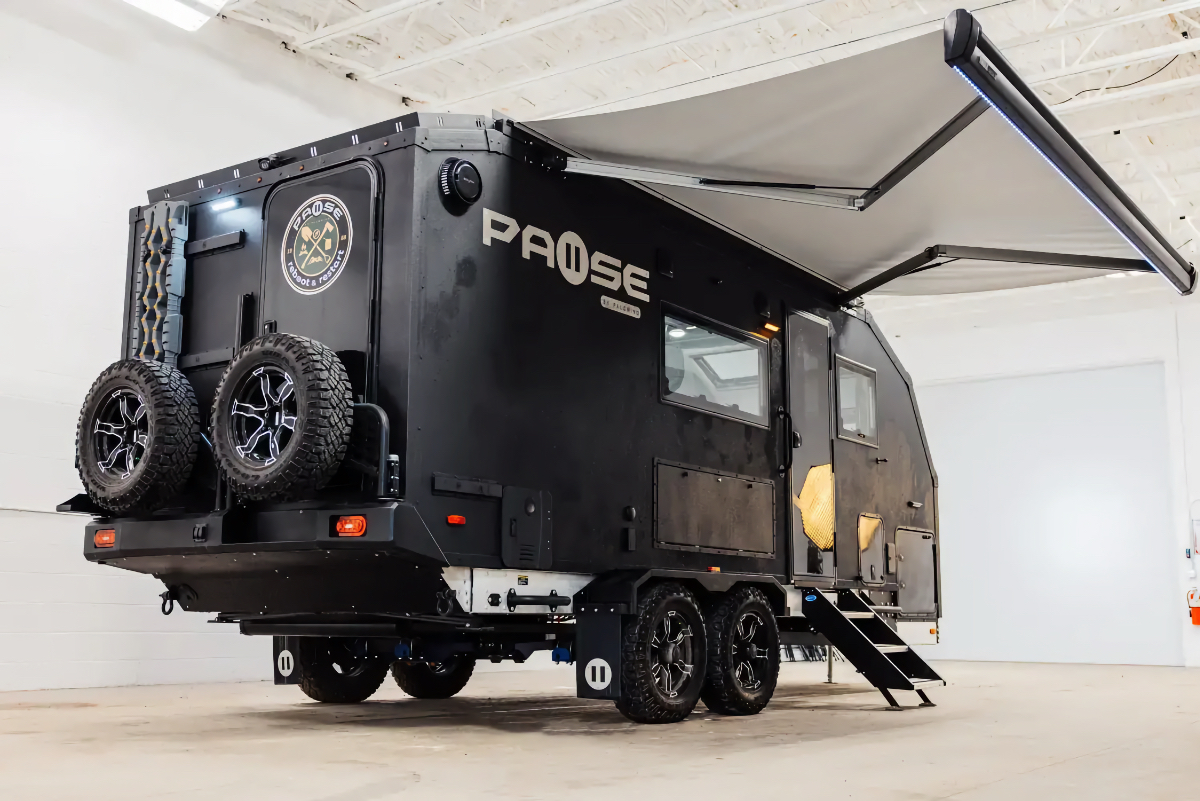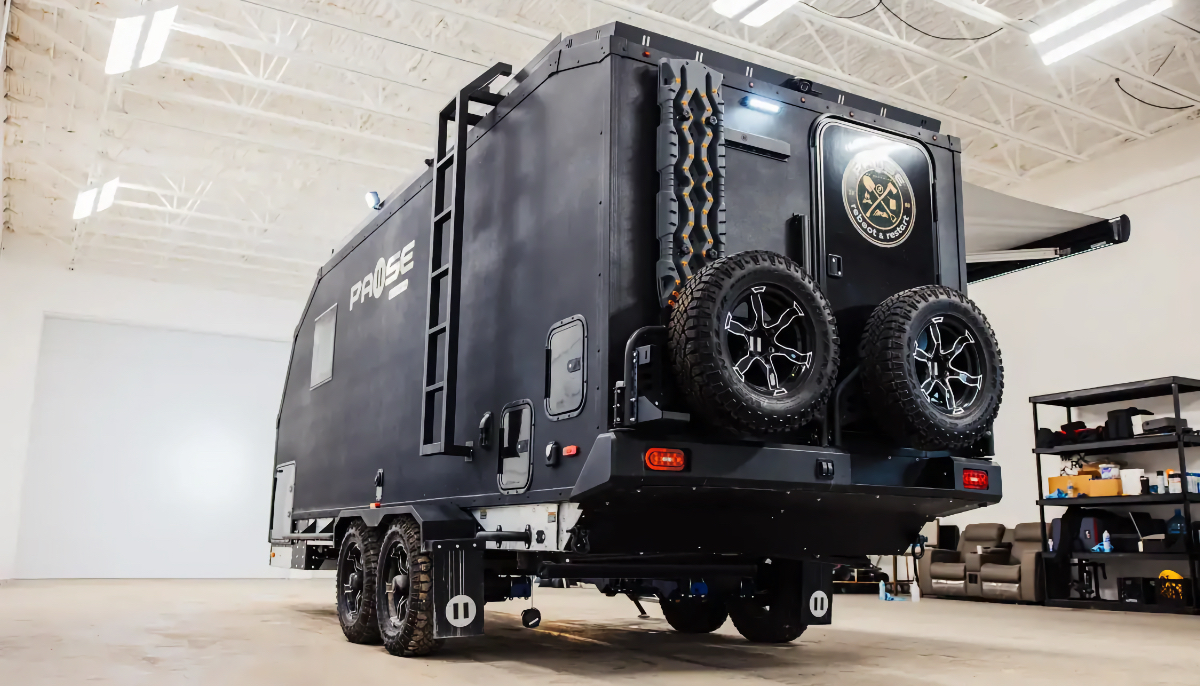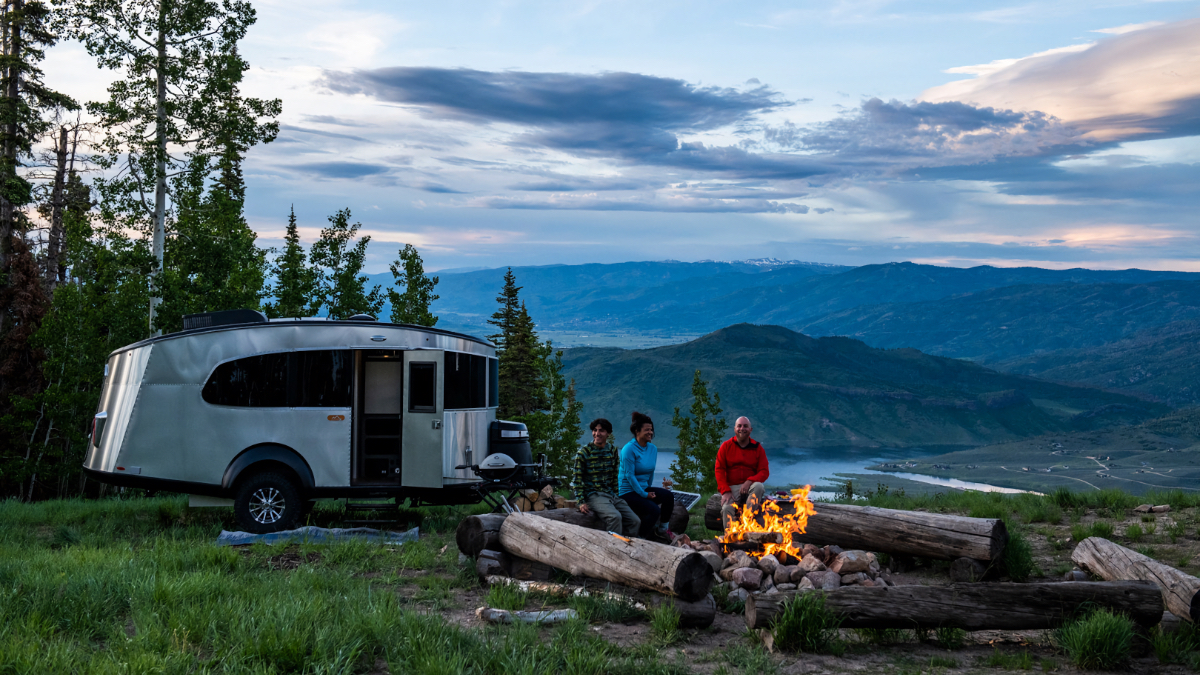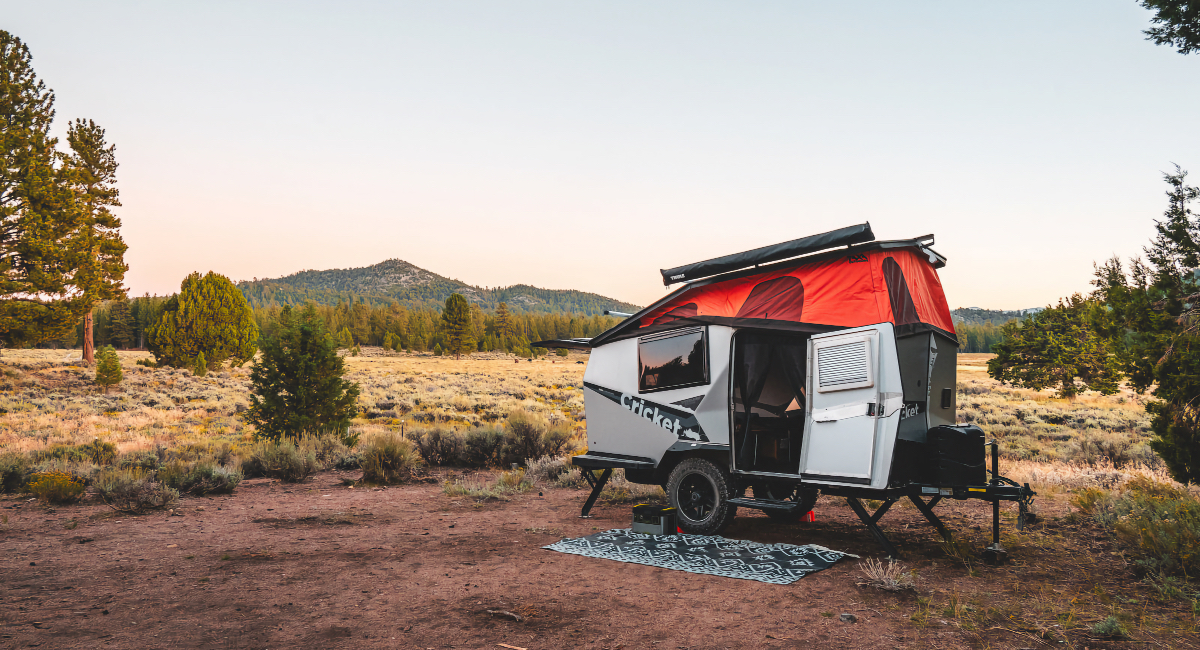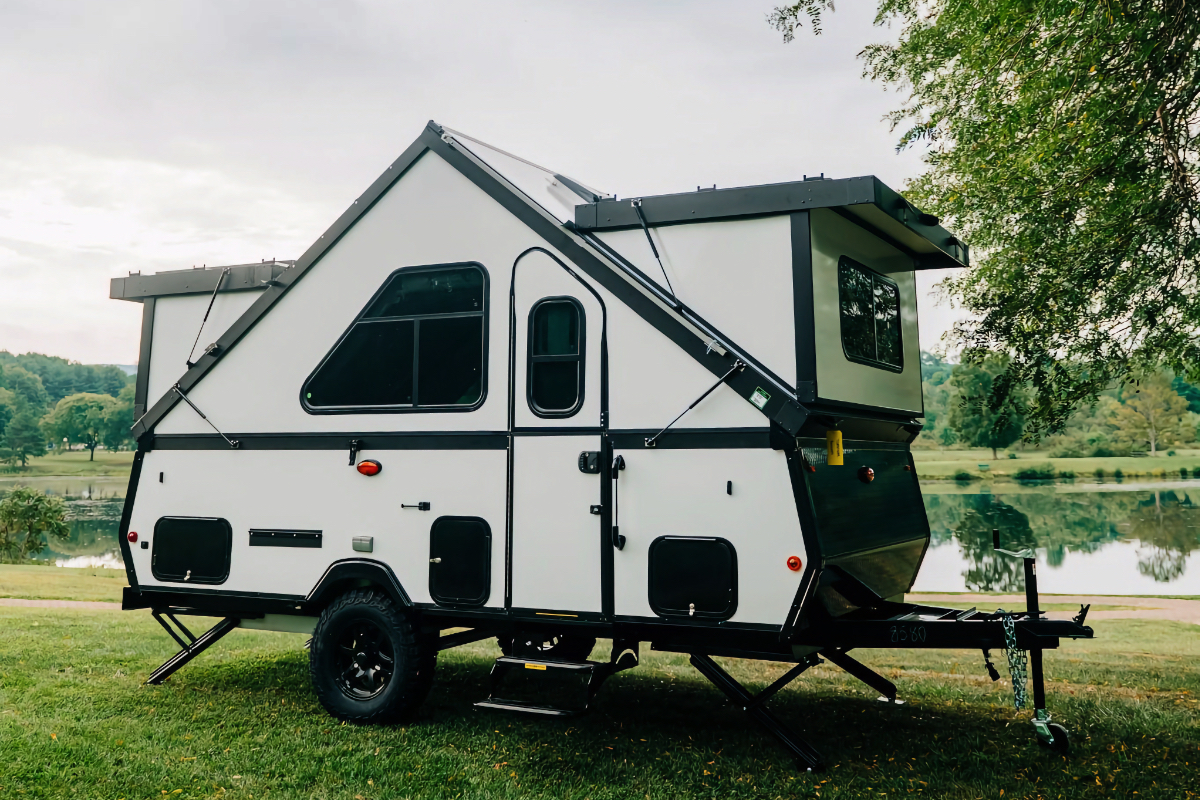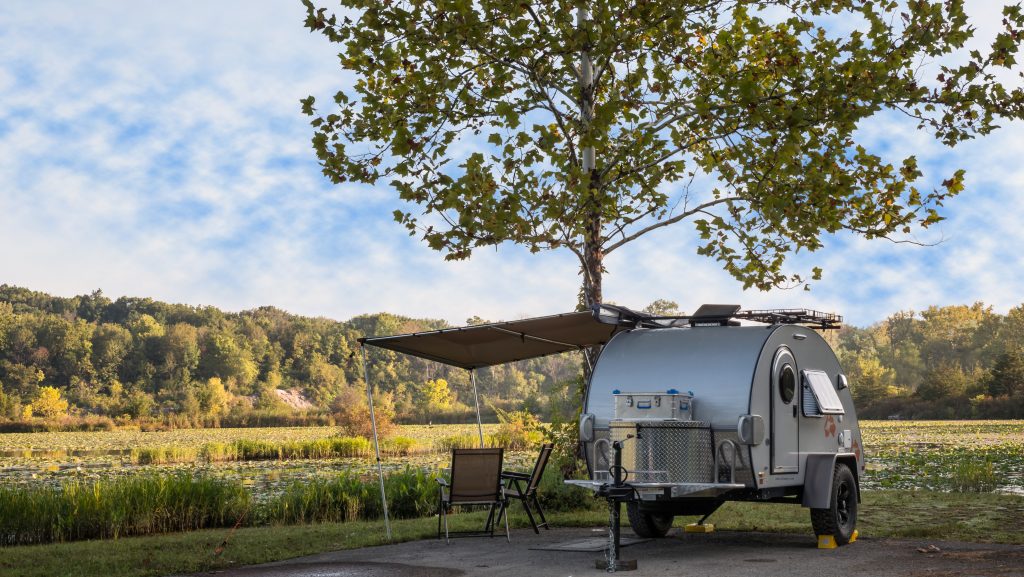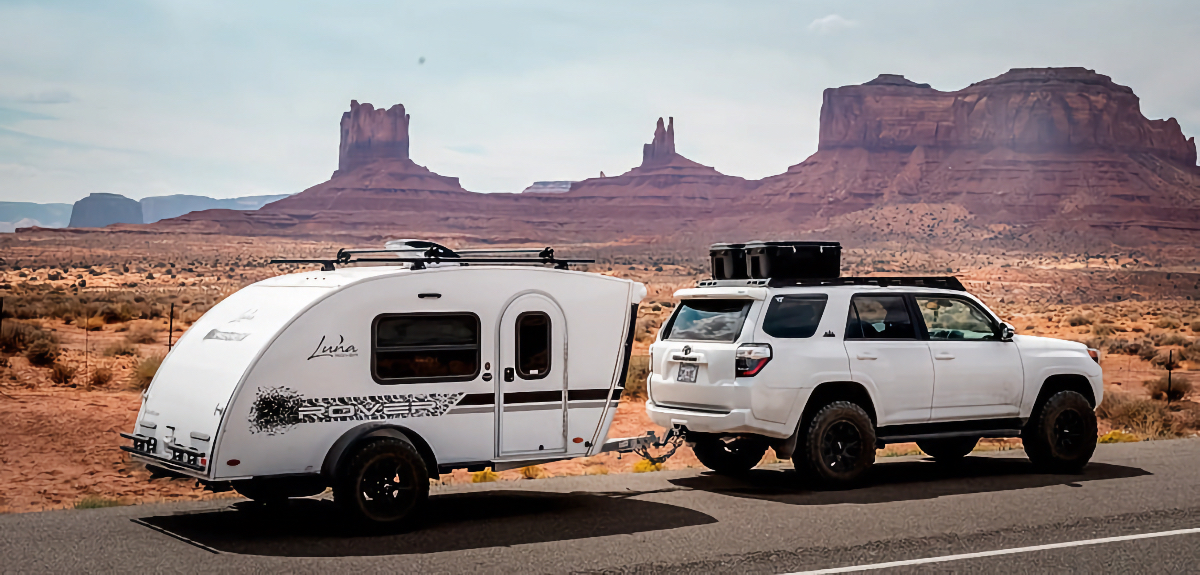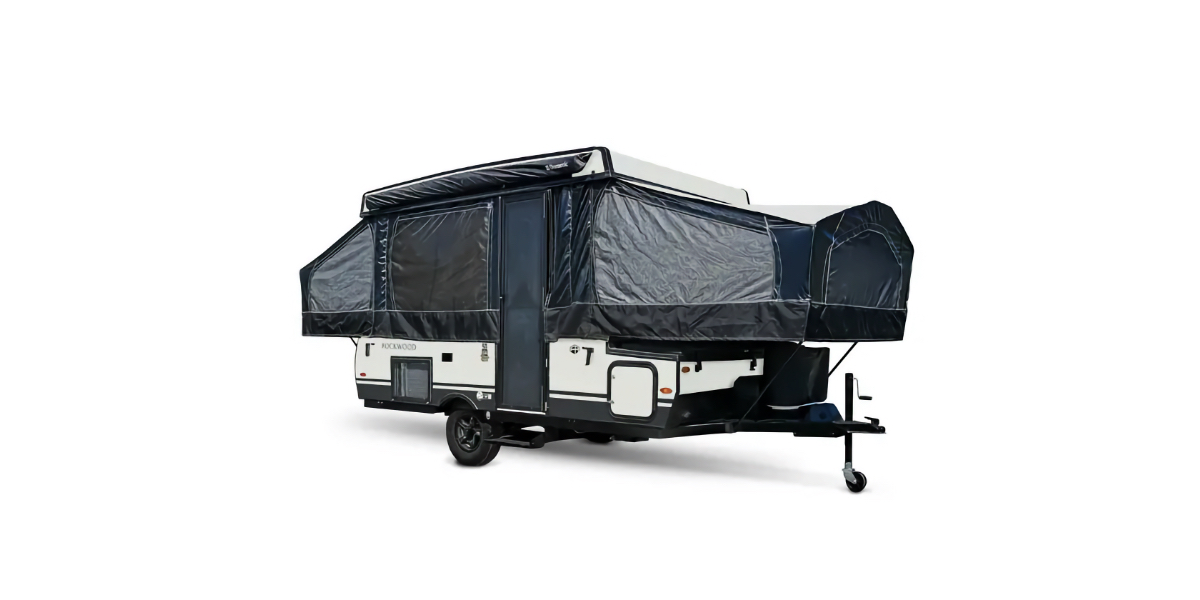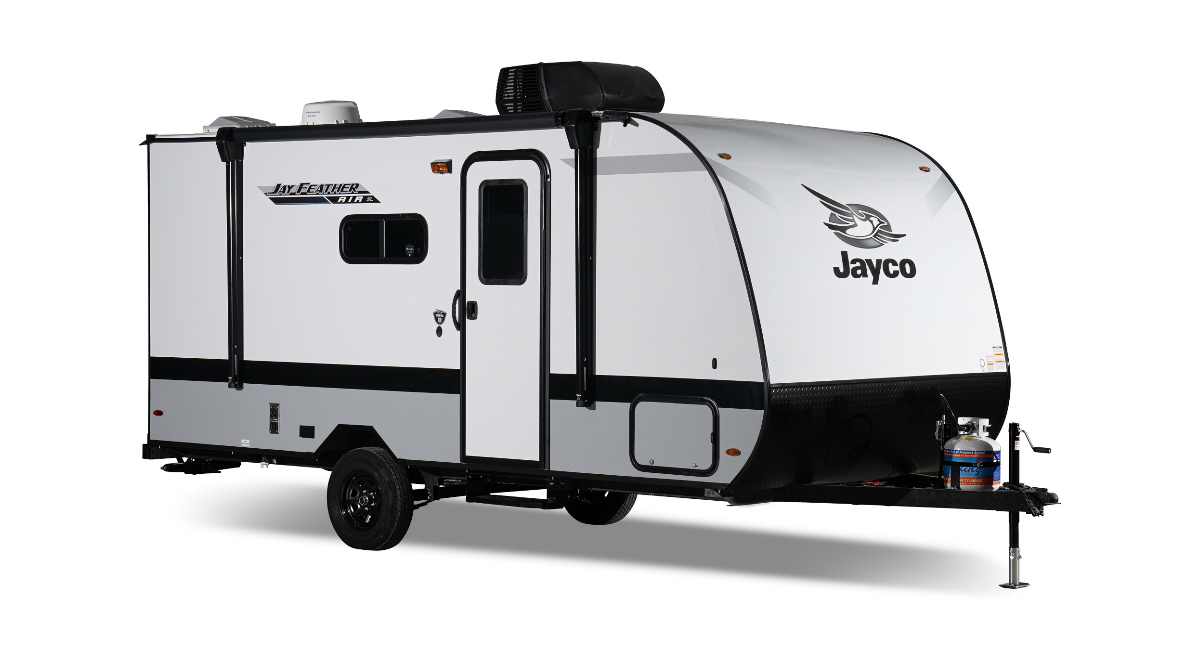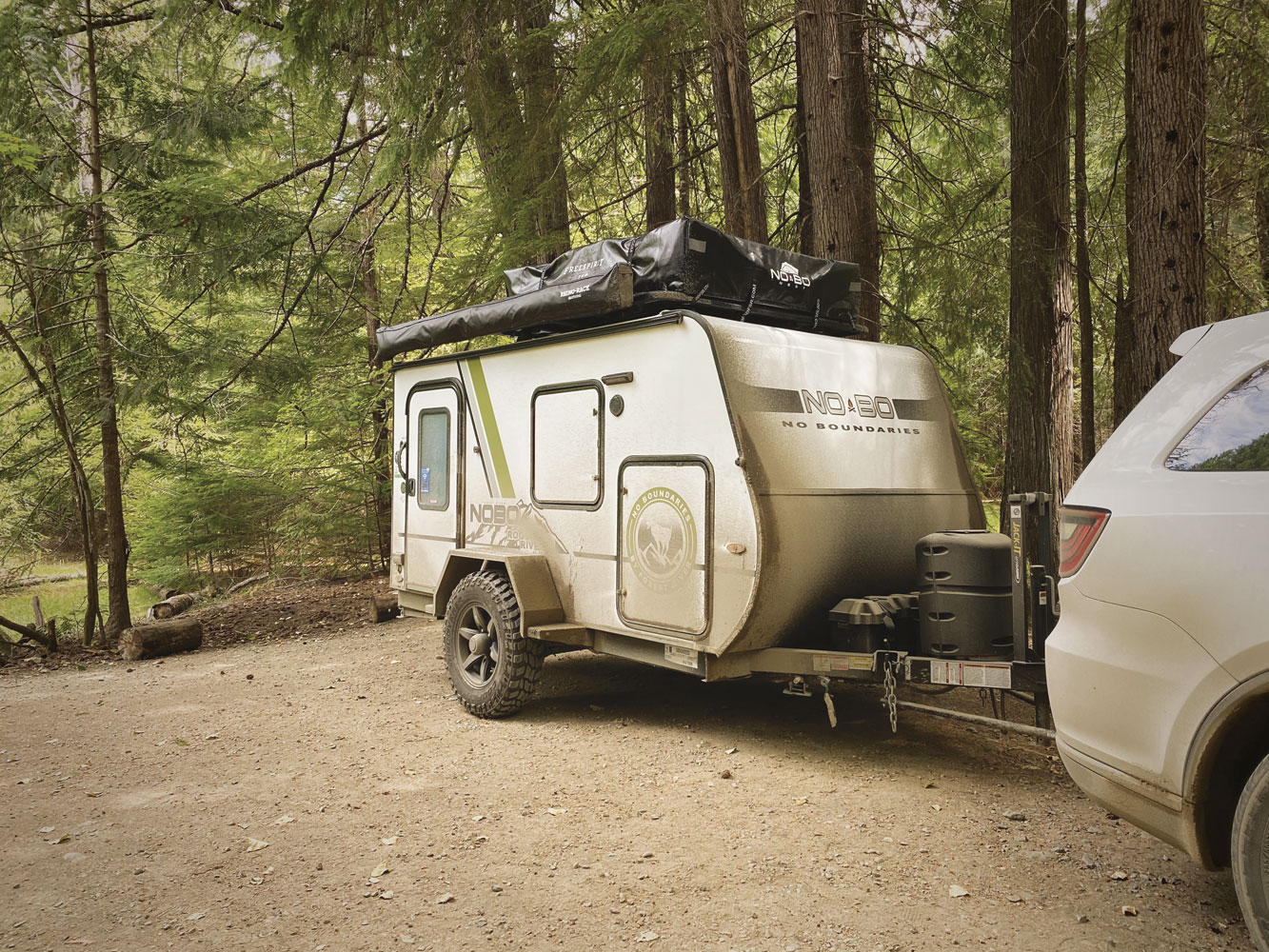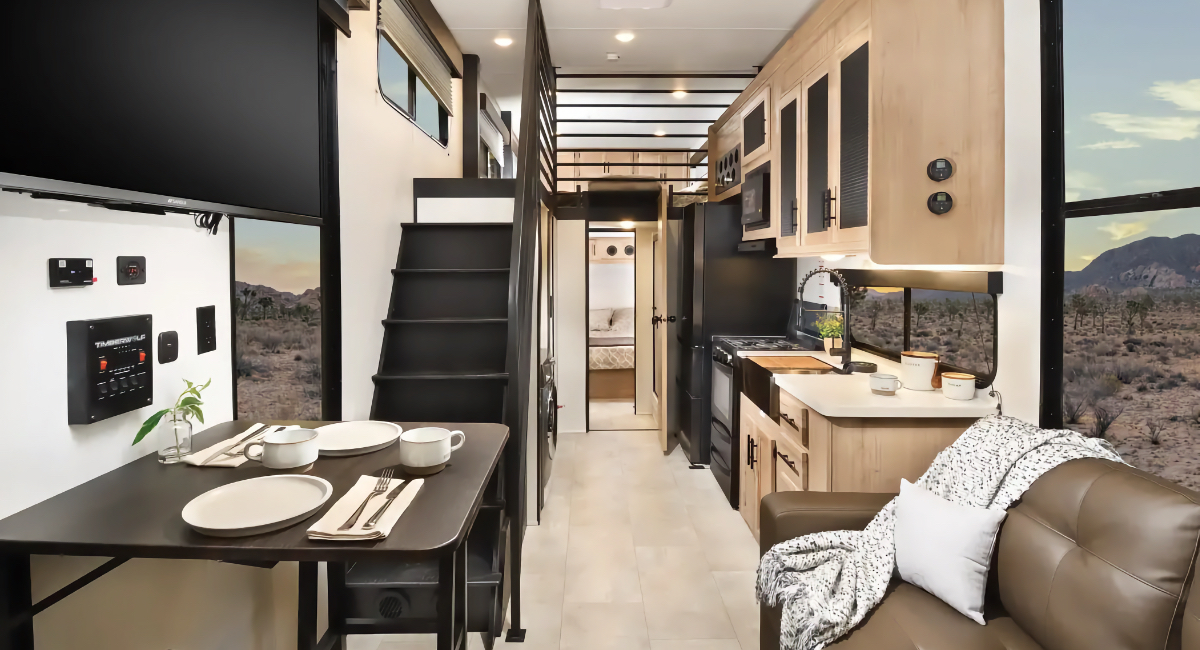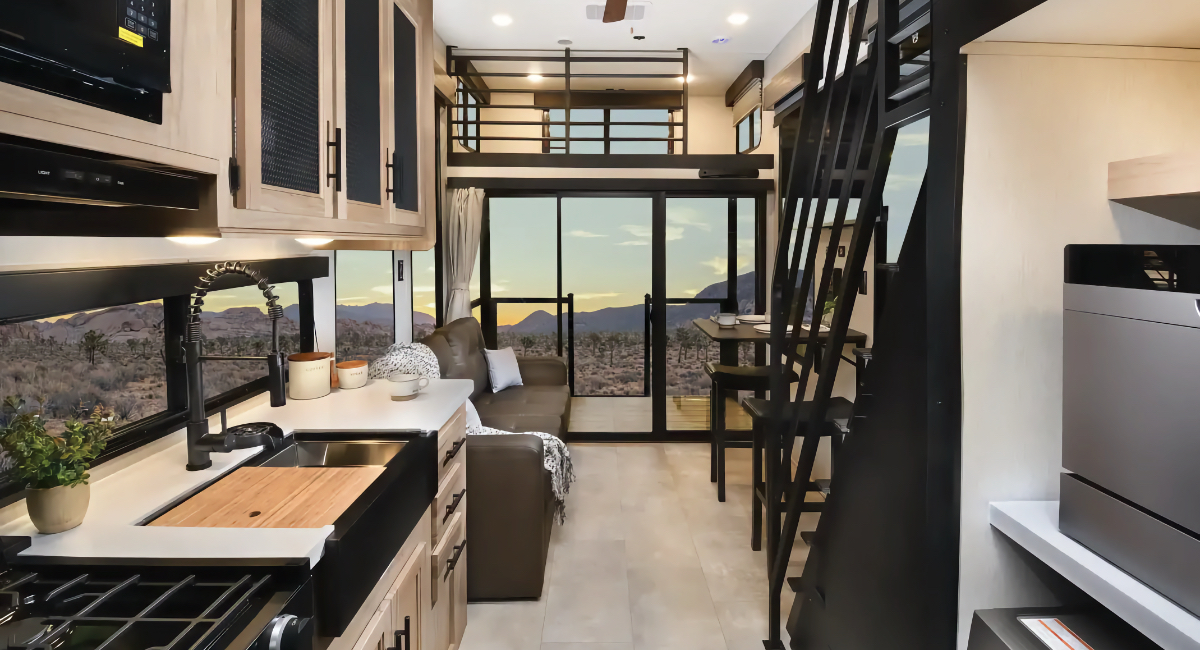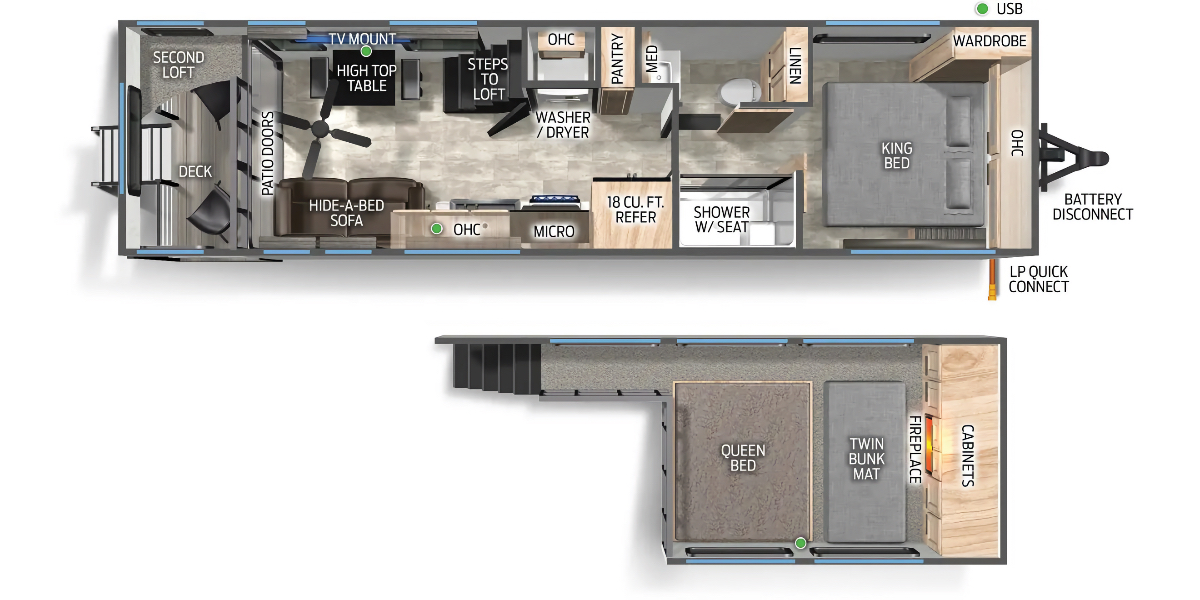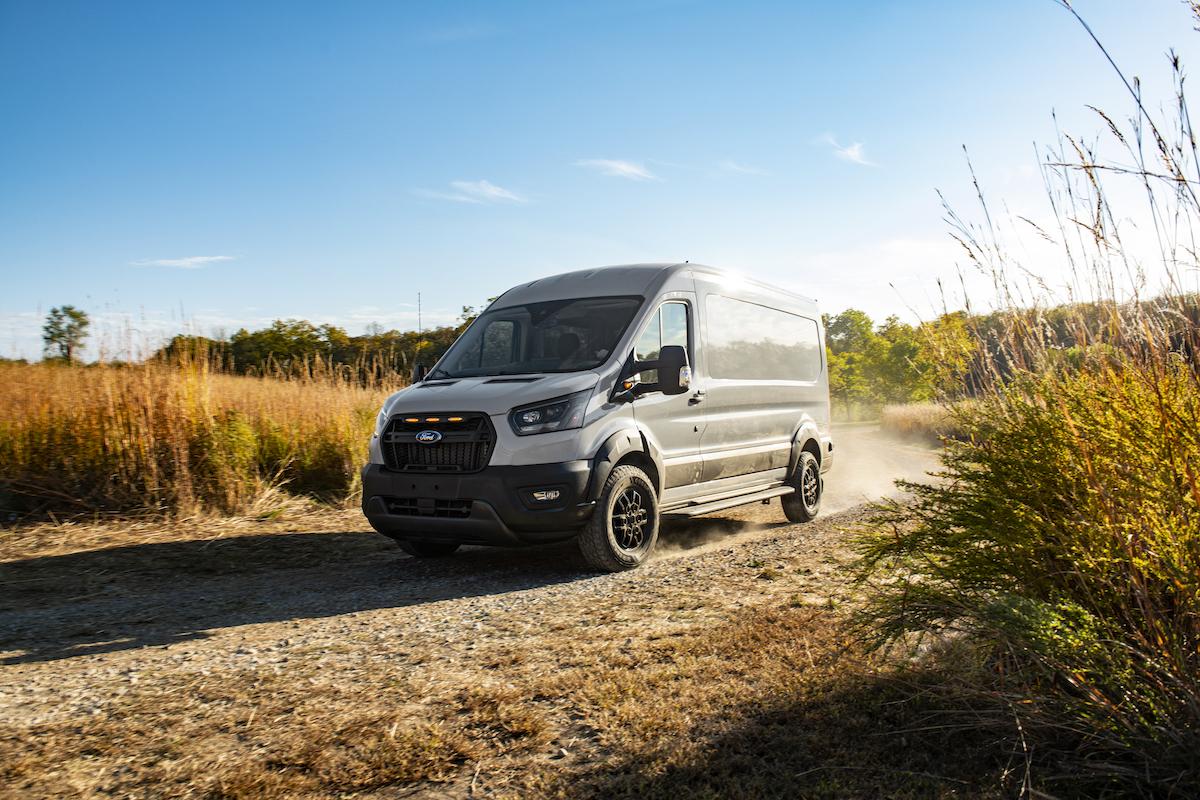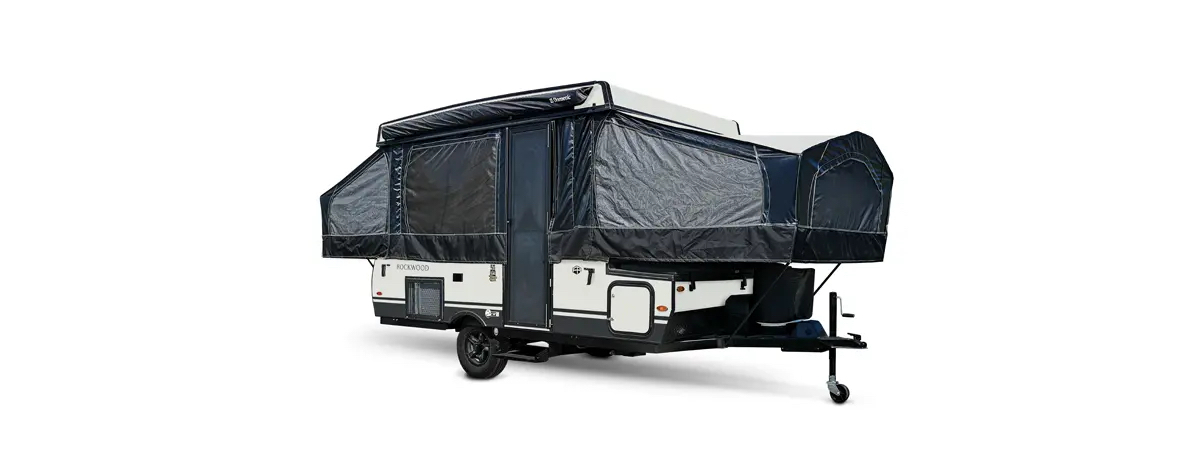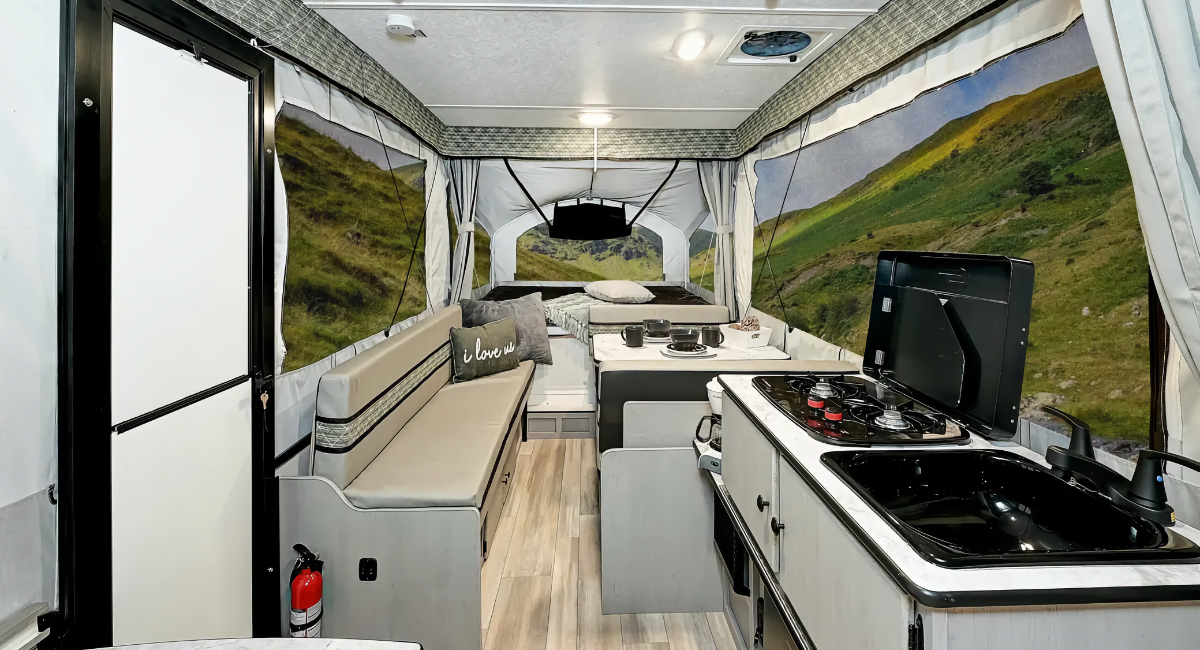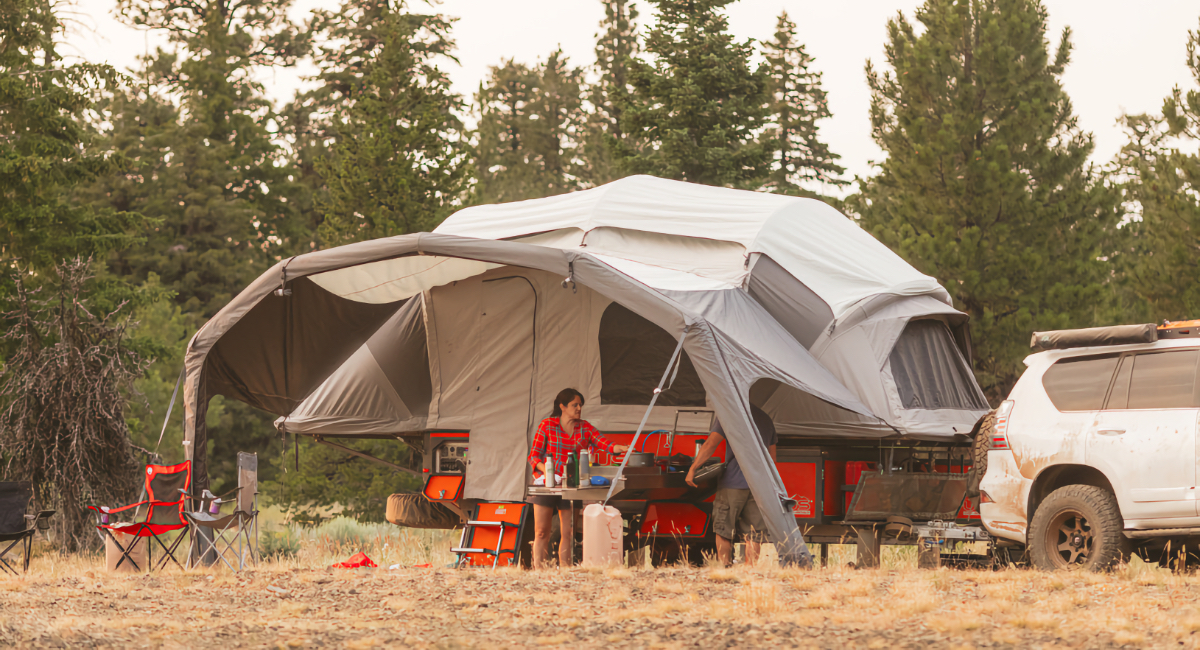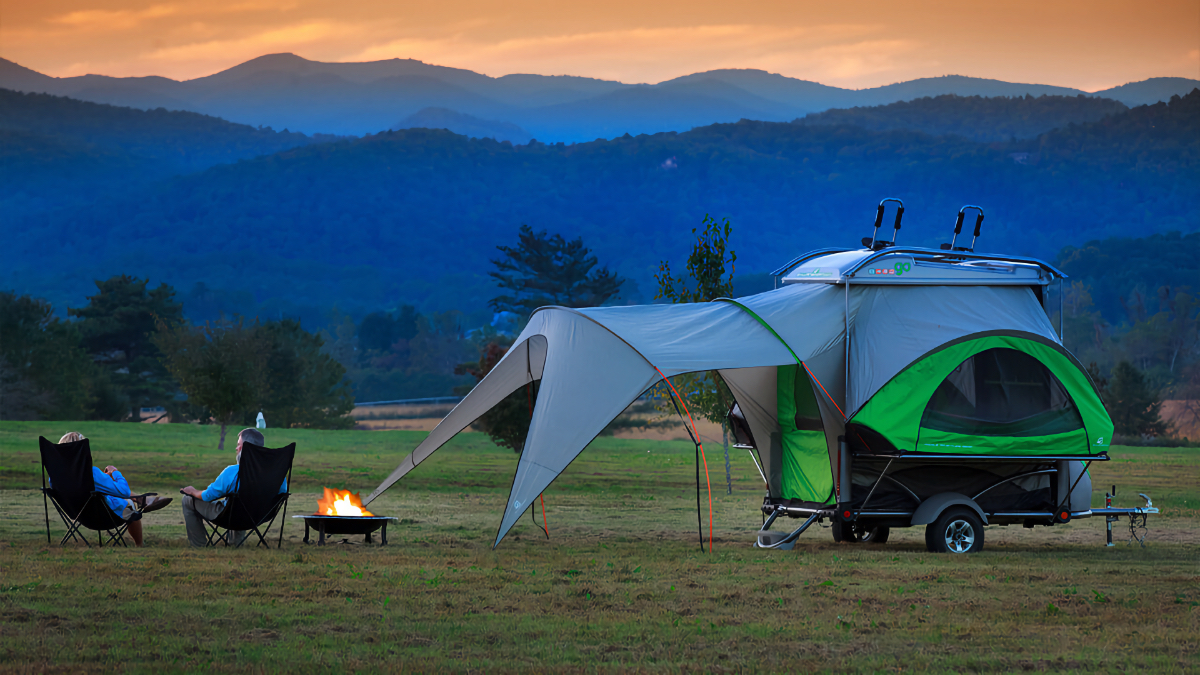If you’re new to the world of RVs—or, let’s be honest, even if you’re an old pro at this—there are a lot of models to choose from these days. For many travelers, the huge Class A motor coaches and even the large travel trailers and fifth-wheels are enticing, but just aren’t all that practical for their needs. For them, lightweight campers that don’t require a large tow vehicle is where it is at, removing much of the expense and complexity from the equation.
But just because you’re not interested in something massive doesn’t mean you have to “rough it.” Lightweight RVs get more and more advanced every year, with more features and amenities making them more than just comfortable—they’re downright luxurious. And with some truly enticing options now coming in under 3,000 lbs., it is possible to have a well-equipped model that you can haul behind your daily driver.
So, what should you be looking for in a camper under 3,000 lbs.? As it turns out, there are dozens of brands out there producing lightweight campers. Which ones are the best?
Thankfully, that diversity means there are plenty of options for finding the one that’s right for you. Because of that, many of these little guys fly under the radar, despite being excellent options that will take you anywhere you want to go.
Let’s look at ten campers to consider, all of which are under 3,000 lbs.
Airstream Basecamp 16

Photo Credit: Airstream
Airstream’s design and build quality are legendary, but did you know that the RV manufacturer makes a lightweight camper that is easy to tow? The Basecamp 16 is one of the smaller models in the Airstream catalog, making it ideal for towing with a mid-size truck or SUV. And like its larger siblings, this model features the brand’s iconic aluminum frame that is designed to last for decades, while offering outstanding performance in a variety of weather conditions or when traveling off-road.
The Basecamp 16 makes the most of its space, using versatile bench seating with removable tables as a dining area/workspace. Those benches convert into a bed with room to comfortably sleep two adults. The onboard galley kitchen has a two-burner stove, stainless steel sink, a microwave, and a refrigerator. There’s even a wet bath with a shower, toilet, and sink, all in a rig that is just 16 feet in length.
True to its name, the Basecamp is a great option for active outdoor enthusiasts. It offers cargo space for plenty of outdoor gear and it comes with a 300W solar panel. Air conditioning is optional, although a 12,000 BTU ducted furnace is standard.
Dry Weight: 2,650 lbs.
TAXA Cricket Overland

Photo Credit: Taxa
It may be named for something small, but the TAXA Cricket Overland comes in big with the options, features, and versatility. And while the standard Cricket is a perfectly suitable lightweight camper, the Overland takes everything up a notch or two. Compared to its non-Overland counterpart, this model has better ground clearance and upgraded off-road tires, allowing you to get further off the grid. If you’re looking for a camper that will stand out from the crowd, the style alone sets it apart. Its funky, angular look is striking, but functional too. There’s a pop-up roof for better ventilation, and five windows (with screens), and five more mesh windows, there’s plenty of cross breeze to be had.
Inside, the Cricket Overland sleeps two adults and two kids comfortably. But there’s plenty of seating as well—plus a small cafe table in case you’re working on the go. And the kitchen is highly functional, too, featuring a two-burner cooktop, a counter, and a covered sink to add even more space. It also comes equipped with furnace for extended season camping and a water heater to help with cooking and cleanup.
Despite its size, storage is also not an issue, with plenty of space all around. It even comes with stackable milk crates that can be easily removed and filled for packing.
Dry Weight: 1,978 lbs.
Aliner Amp

Photo Credit: Aliner
Aliner specializes in making lightweight campers that don’t compromise on performance or specs. In fact, most of the company’s current catalog of travel trailers fall under the 3,000 lbs. dry weight mark, including its Scout, Ranger, Expedition, and Evolution models. But we’re especially impressed with the Amp, which is custom-made for wandering off-road and off-grid.
The aptly named Amp comes with a 5kWh EcoFlow lithium battery pack, 400W solar panels, and a 3,600W inverter. This allows owners to camp in remote places while still powering the rig’s mini-fridge, LED lights, single-burner induction stove, and tankless water heater. The towable is also outfitted with a 16,000 BTU furnace and a 9,000 BTU air conditioner to keep you comfortable all year long.
Other features include a swivel cassette toilet, indoor and outdoor showers, a couch that converts to a bed, and keyless entry. The trailer uses an A-frame design that collapses down to a small profile while in transit, and expands for added space at the campsite. Perhaps best of all, it can be stored in a garage back home when not in use.
Dry Weight: 2,600 lbs.
NuCamp T@G Teardrop Trailer

Photo Credit: NuCamp
TAG (or T@G) teardrop trailers are the epitome of small in stature but big in features. Coming in both standard and XL versions, it’s a lightweight unit that offers the basics you need for camping, with few extra features for added comfort. Unlike some other trailers you’ll see on this list, the interior of the TAG is literally just a bed—albeit a massively comfortable one. A queen-size mattress lets you stay comfy and cozy when you crawl in at the end of the night. You’ll also find Amish cabinetry for storage, an air conditioner and heater, a power roof fan to keep air circulating, a stargazer window, and a surprising amount of under bed storage.
But wait, there’s more. The kitchen lives under a pop-up at the rear of the outside of the camper. It includes a stainless steel sink and faucet, a two-burner stove, and a microwave. There’s a designated space that’s perfect for holding a powered cooler, plus storage for pots, pans, and other cooking paraphernalia. The kitchen even has a couple of speakers so you can rock out while you cook.
Optional upgrades include a 180W solar package, a 100Ah lithium battery, and a wireless battery monitoring system. Basically, everything you need to camp off-grid.
Dry Weight: 1,335 lbs. (Classic model)
KZ Sportsmen Classic

Photo Credit: KZ
The KZ Sportsmen Classic has been a mainstay in the RV industry for a number of years, delivering full-size travel trailer comfort and features in a lightweight model built for couples and young families. This rig is available in eight floor plans, with six models coming in with a dry weight of under 3,000 lbs., and the remaining two, just nudging over that mark.
Key features in each model include large, comfortable beds in the primary sleeping area, with all floor plans including a dinette, save the 130BH, which replaces that space with a set of bunks. The onboard kitchenettes are equipped with a two-burner cooktop, a microwave, a mini-fridge, and a single-basin sink. You’ll also get a dry bath with a toilet, corner shower, and another sink.
Powered awnings are included on every Sportsmen Classic, helping to extend the living space outdoors. A 20,000 BTU furnace keeps the travel trailer cozy in cool conditions, while integrated wireless Bluetooth speakers let you get your groove on. A digital TV antenna, LED interior lighting, a tank monitoring system, and solar and backup camera prep all come standard.
Dry Weight: 2,310 – 3,300 lbs.
InTech Luna Rover

Photo Credit: inTech
Teardrop shapes make for great campers because they’re easy to tow and offer so much space inside. The InTech Luna Rover is no different. The Luna comes in a Base package that is an excellent option, too, but the Rover offers better off-grid performance for those who really enjoy being outdoors. That said, you can’t go wrong with either model and both are excellent lightweight campers.
The interior of the Luna is also primarily a bed, but this one folds up into a couch when you want to use a cabin as a living space. You’ll also find a few other nice amenities, including , an air conditioning unit, a radio, and a small television. The towable even come with a couple of seats and a small table, which come in handy if you find yourself stuck inside during some some inclement weather.
The Rover package upgrades the base with off-road tires and an adjustable roof rack, among other things. It sleeps two adults comfortably, and can even include an optional stowaway toilet. Other options include a fireplace, a 12V mini-fridge, a microwave, and an awning.
Dry Weight: 1,775 – 1850 lbs. (Rover model)
Forest River Rockwood Tent

Photo Credit: Forest River
On a serious budget? It shouldn’t come as a surprise that there are plenty of lightweight camper options that are still on the wallet-friendly side. The Forest River Rockwood Tent is one of them. This pop-up tent camper folds up nicely—making towing a brezze—but when “popped,” offer a ton of space inside. Two beds (yes, you read that right) come standard, so you can sleep up to four easily.
Eight unique floor plans offer different layouts and features. Some include a spacious dinette and table, others include a couch, and a few come with a toilet and shower. All models are equipped with a nice kitchen—with some including an exterior kitchen as well. There’s a fridge, oven, microwave, and counter space in all of them, giving camp chefs plenty of options when it comes to meal prep.
Because the sidewalls of the camper are mesh (it’s a tent, after all) it’s easy to get a nice cross breeze and stay cool at night. When you need a little privacy—or additional warmth—zip the windows up. These lightweight campers are affordable options for three-season outings and are perfect for families.
Dry Weight: 1,299 – 3,058 lbs. depending on the floor plan
Jayco Jay Feather Air SL

Photo Credit: Jayco
Jayco’s entry into the lightweight camper space is the Jay Feather Air SL, a travel trailer squarely aimed at RVing couples and small families. The rig uses the company’s A-frame and galvanized steel construction to create a high-quality towable that won’t break the bank nor require a large tow vehicle to haul it around.
Available in one floor plan, the Jay Feather Air SL comes with a queen-size bed, integrated cabinets, shelves, and nightstands, and a cozy dinette for sharing meals and socializing. Two bunks added additional sleeping space, while the onboard bathroom includes a toilet and a spacious shower. The well-appointed kitchen comes with a two-burner stove, a mini-fridge, a microwave, and a sink with a high-rise faucet.
While not a true four-season camper, the Jay Feather Air SL does come with a 13,500 BTU A/C unit and a 19,000 BTU furnace, keeping it comfortable in a wide range of temperatures and conditions. Solar prep, an on-demand water heater, powered awning, and LED lighting are all amongst its many standard features. A 200W solar package is optional.
Dry Weight: 2,995 lbs.
Forest River No Boundaries

Photo Credit: Forest River
This one is for serious explorers. The Forest River No Boundaries travel trailers are lightweight campers that are versatile, durable, and built for adventure. They also happen to be toy haulers, making them even more enticing. Yes, you can load up your ATV or motorcycle or whatever outdoor toys you enjoy and bring them along with you wherever you go. Not bad for an RV with several floor plans that weigh less than 3,000 lbs.
So, how exactly does a lightweight camper also serve as a toy hauler? These models accomplishes this by using creative design and construction to make the interior space as flexible and versatile as possible. Floor plans make use of fold-away tables and soft beds, roof racks, under-floor storage, and other creative design elements to make room for all your outdoor gear. But that doesn’t mean you have to compromise on comforts and conveniences. Even the smallest base model comes with air conditioning, a fireplace, a large fridge, and a wall-mounted TV.
To be fair, Forest River now offers the NoBo line in 20 different floor plans, most of which exceed our 3,000 lbs. weight limit. But the smaller models do meet our requirements, while the larger ones are still very light for the features and functionality they offer. Plus, they’re rugged enough to wander off pavement and serve as an excellent base camp for your outdoor adventures.
Dry Weight: 2,179 – 2,274 lbs. (10 Series models)
Lance 1475 Travel Trailer

Photo Credit: Lance
Simple, elegant, and well-equipped are all words we’d use to describe the Lance 1475 Travel Trailer. This lightweight model exhibits Lance’s trademark durability and reliability, in a package that is nimble and easy to tow. In fact, the 1475 was built from the ground up with small SUV and truck owners in mind, utilizing an aerodynamic design and durable—yet light—materials to create a rig that doesn’t compromise on comfort or space.
The 1475’s long list of standard features includes plenty of items you would expect to find in larger, heavier, and pricier travel trailers. Things like a residential queen-size bed, integrated JBL speakers, and LED lighting throughout. The galley kitchen is especially nice, with a three-burner stainless steel stove, a built-in range hood, a mini-fridge, and a decorative backsplash. Two comfy lounge chairs, plenty of integrated storage, and a private bathroom are also standout items.
One thing that is often lacking on smaller RVs is windows that allow natural light inside. That isn’t the case here, as this model not only has plenty of windows, it includes overhead skylights to help brighten the interior and save on energy use. The cabinets, floors, and other materials also have a light, modern look that gives the 1475 an inviting feel.
Dry Weight: 2,905 lbs.
The post 10 Lightweight Campers to Consider Under 3,000 lbs. appeared first on RV.com.
